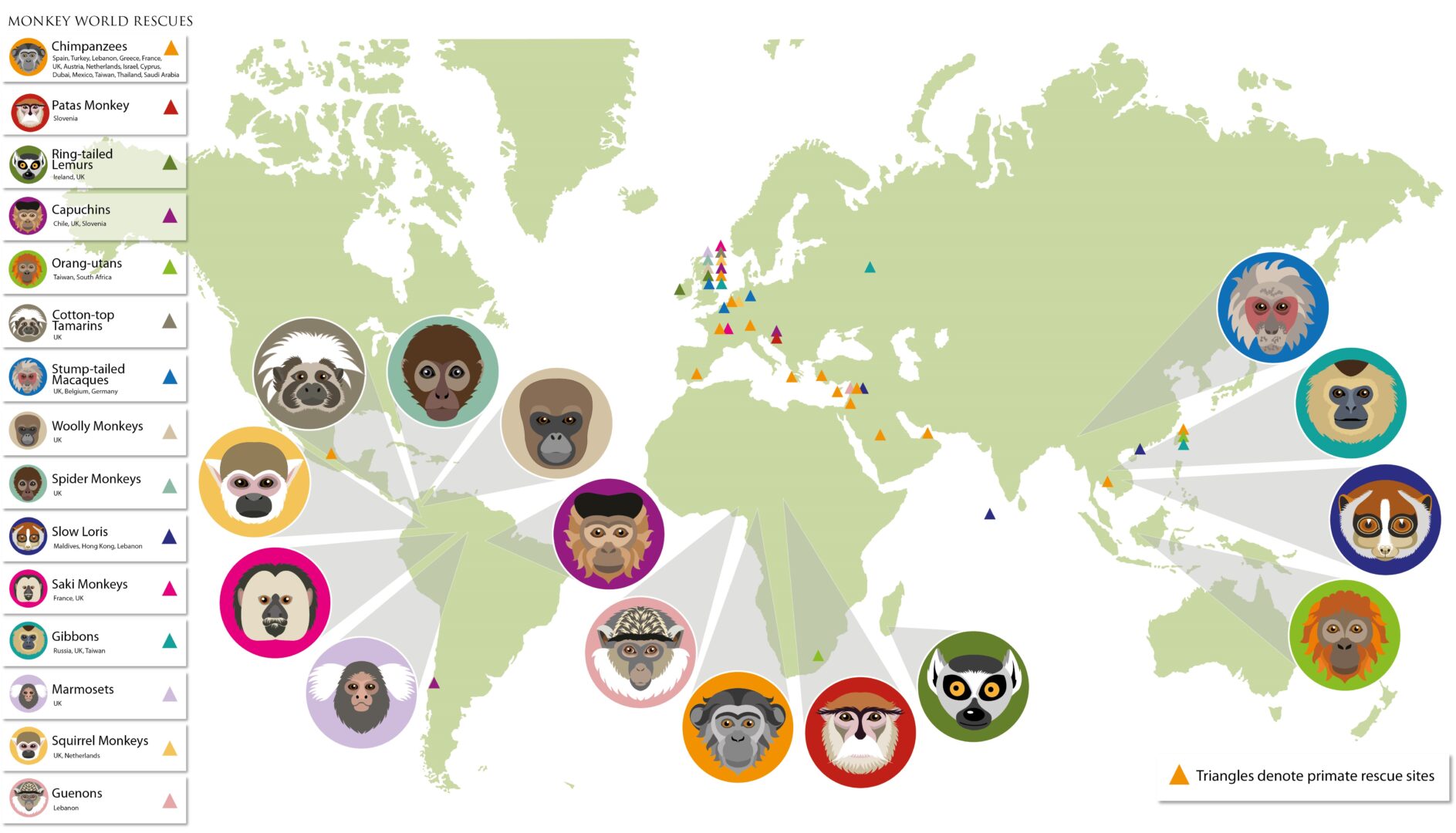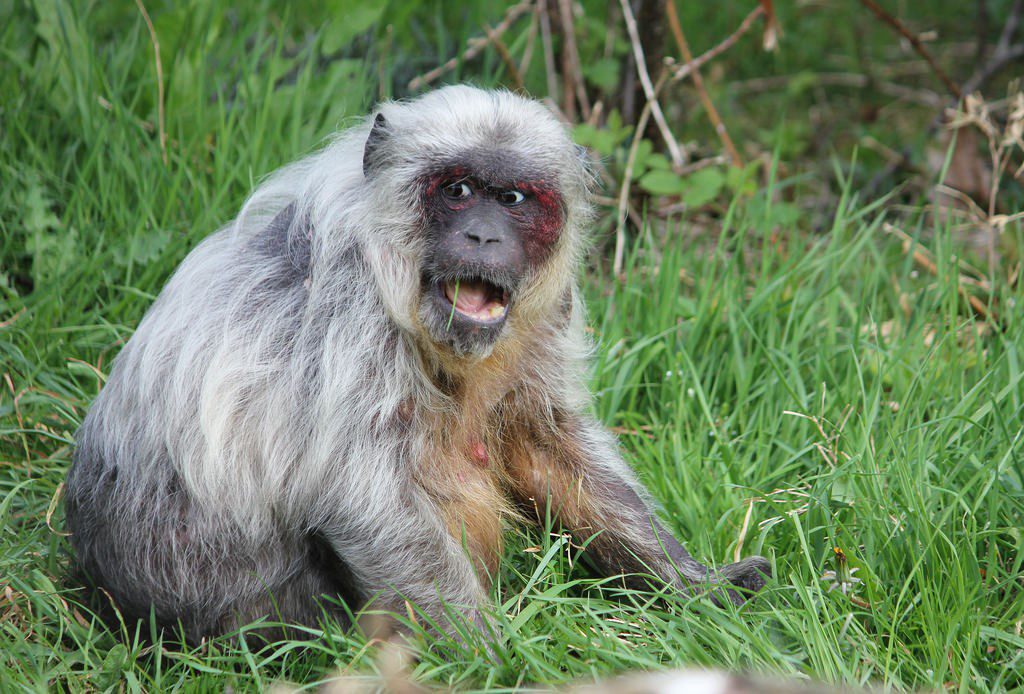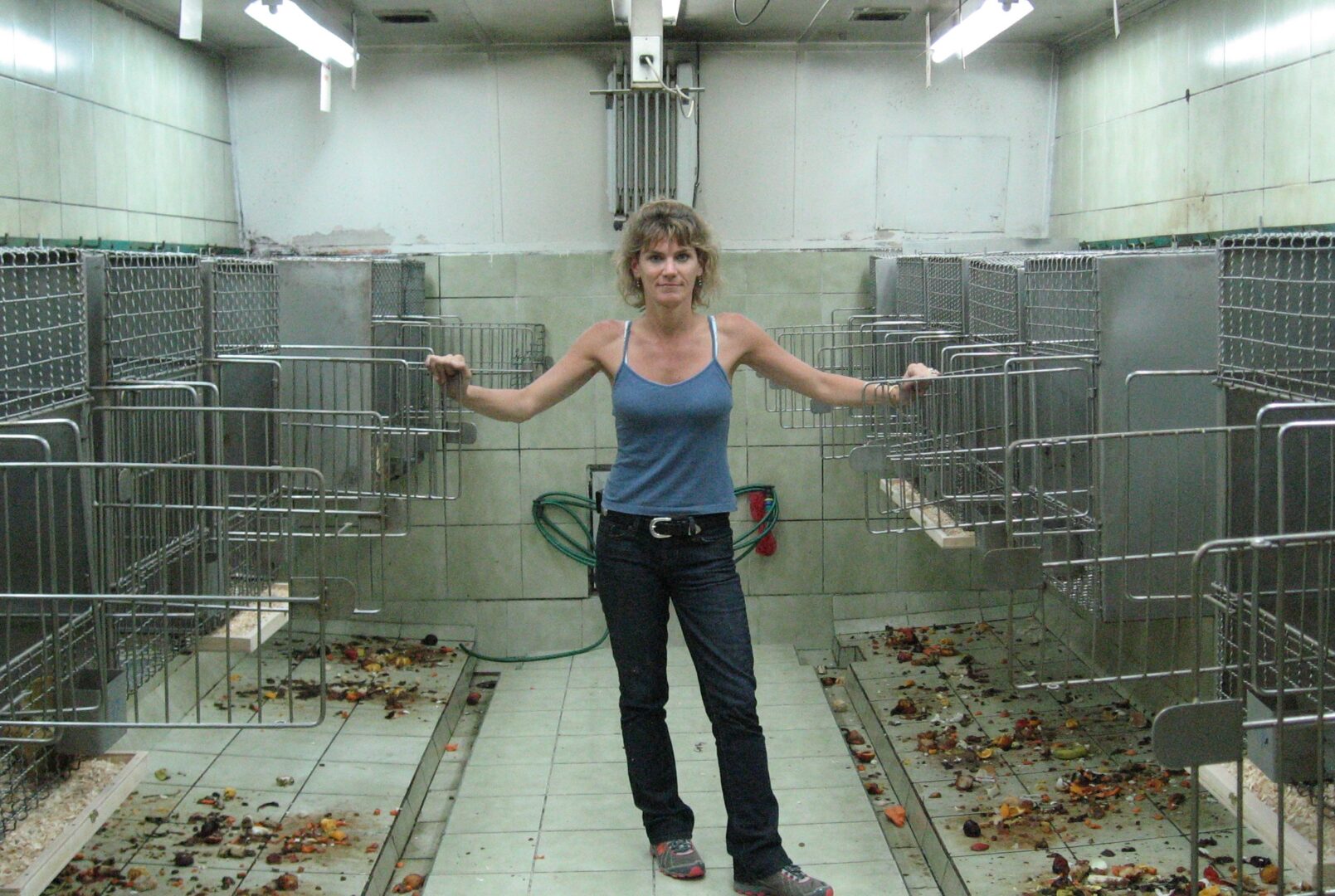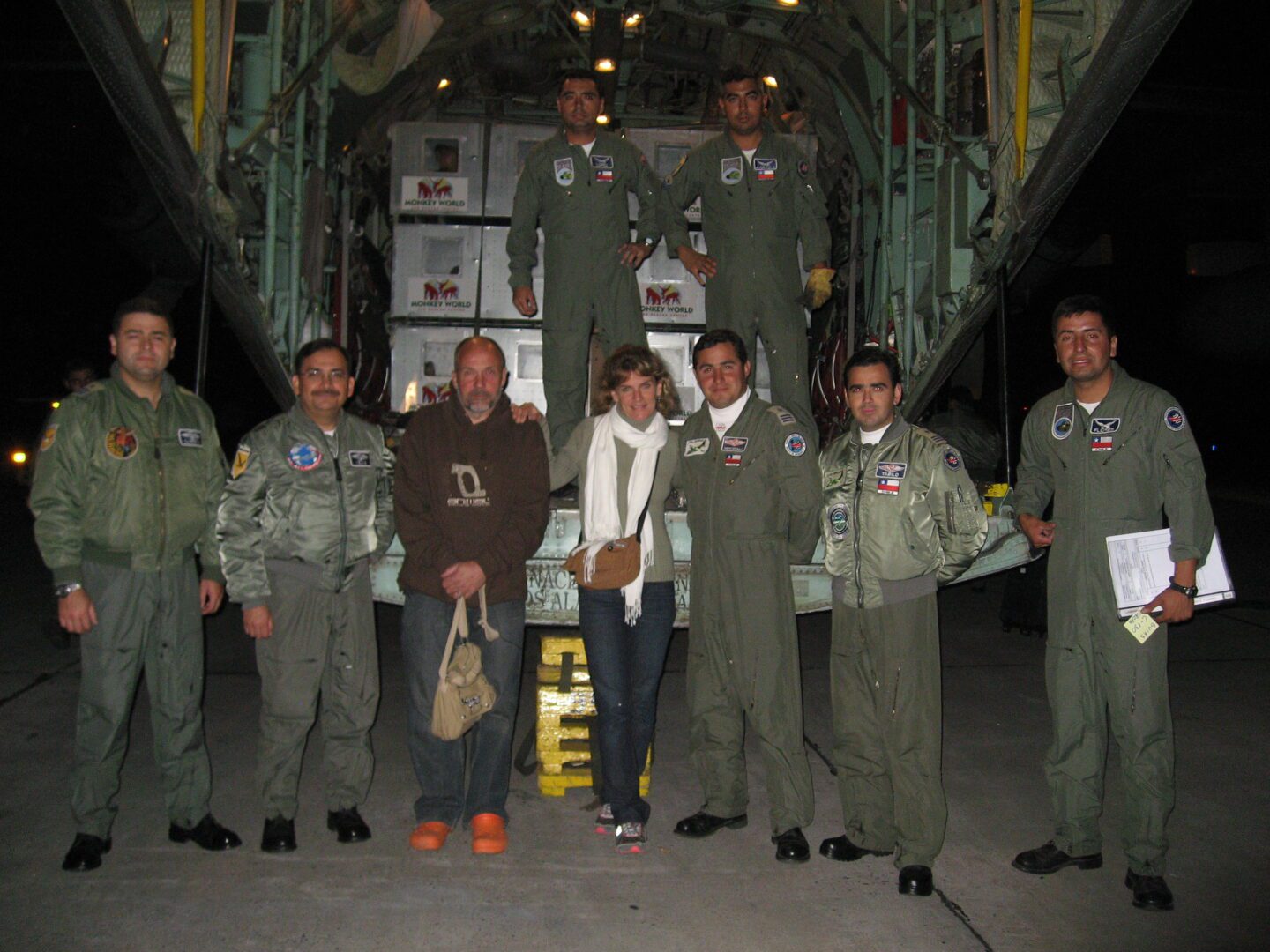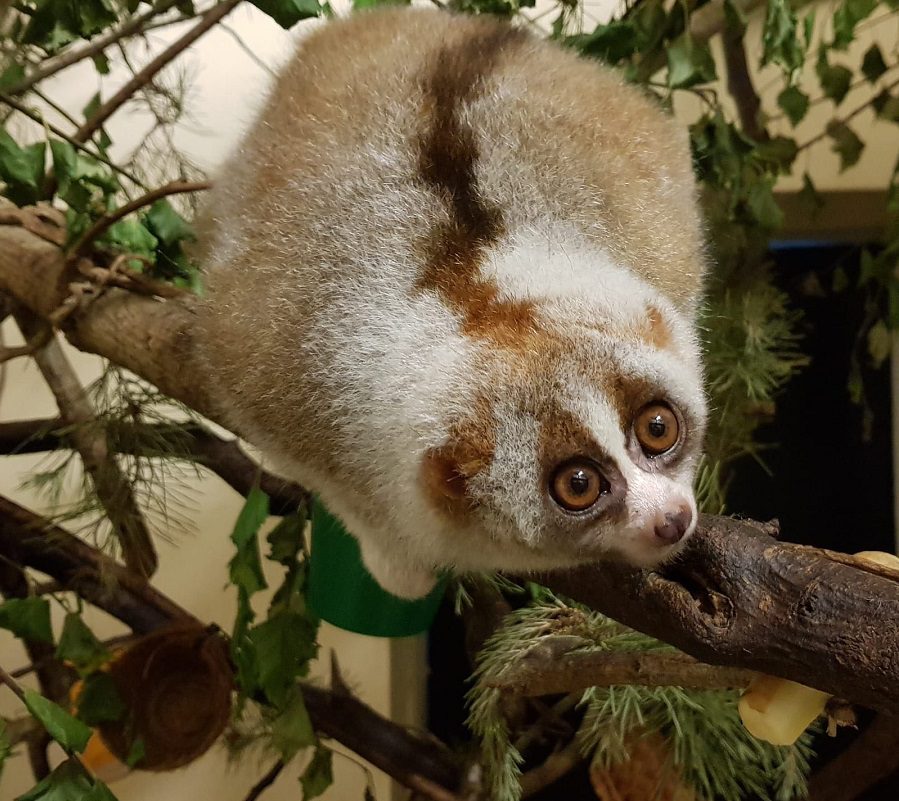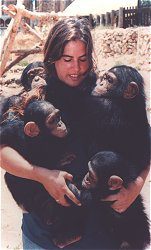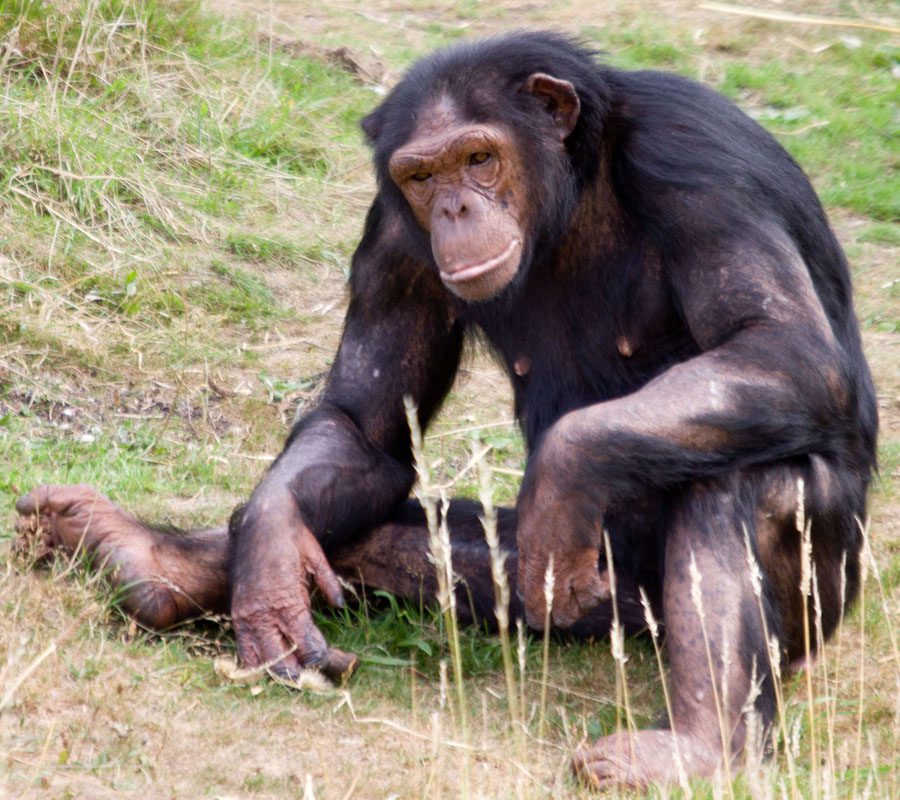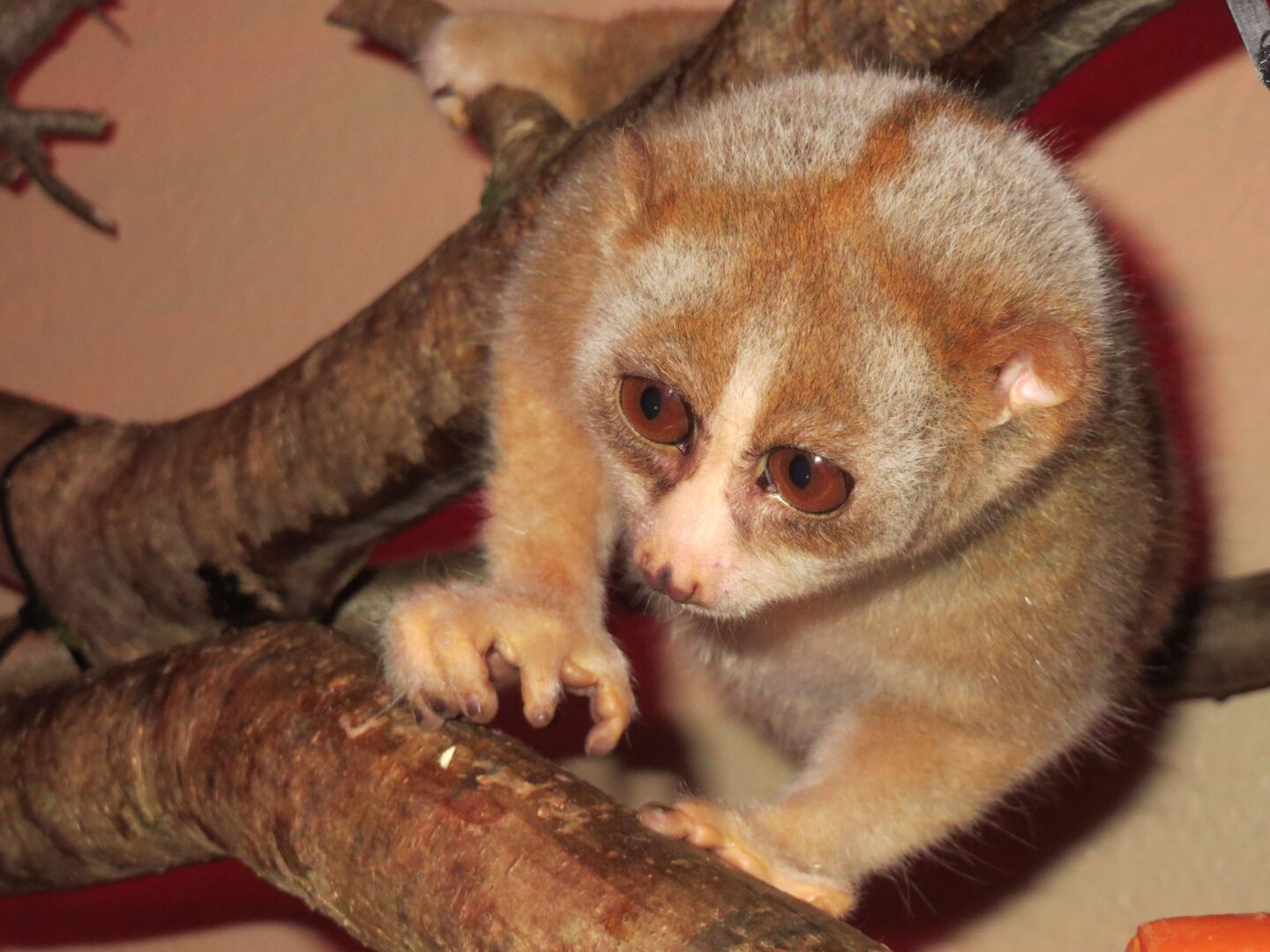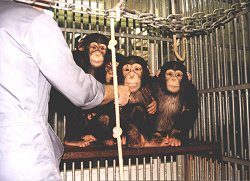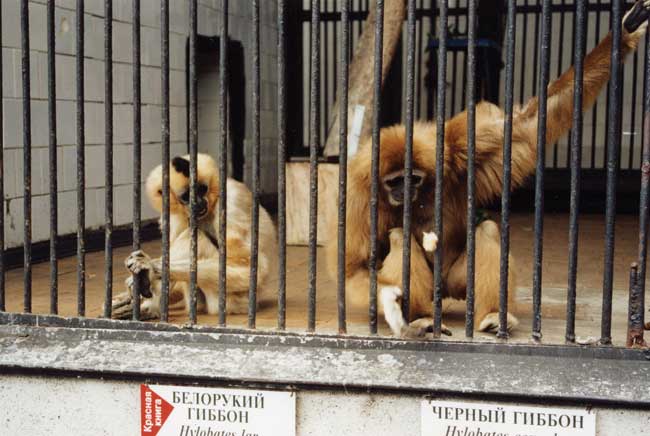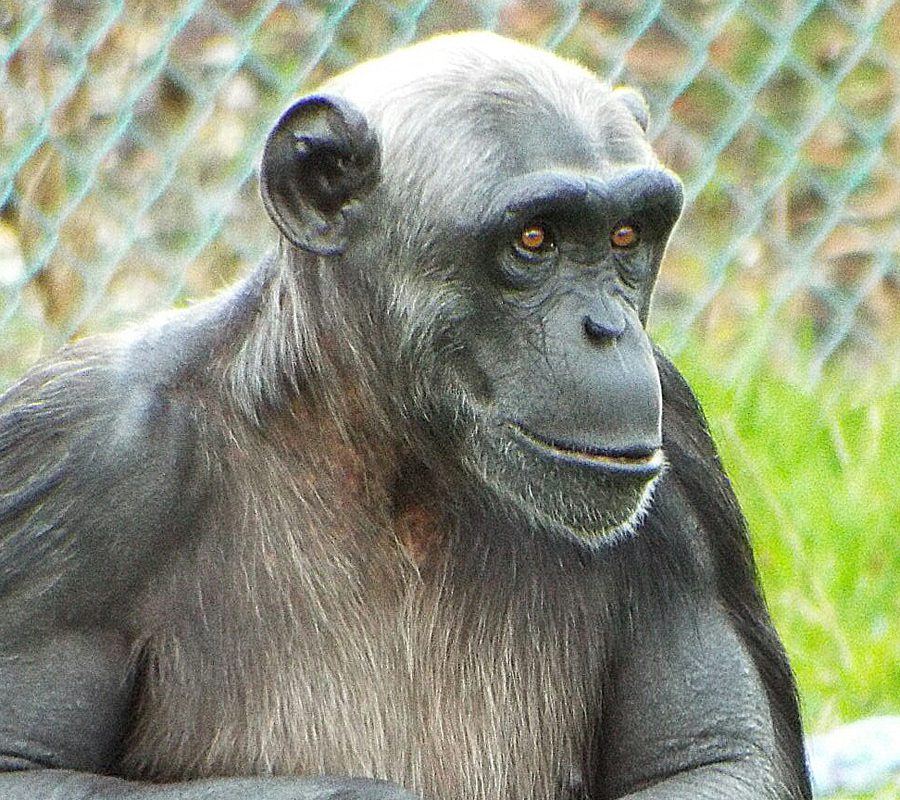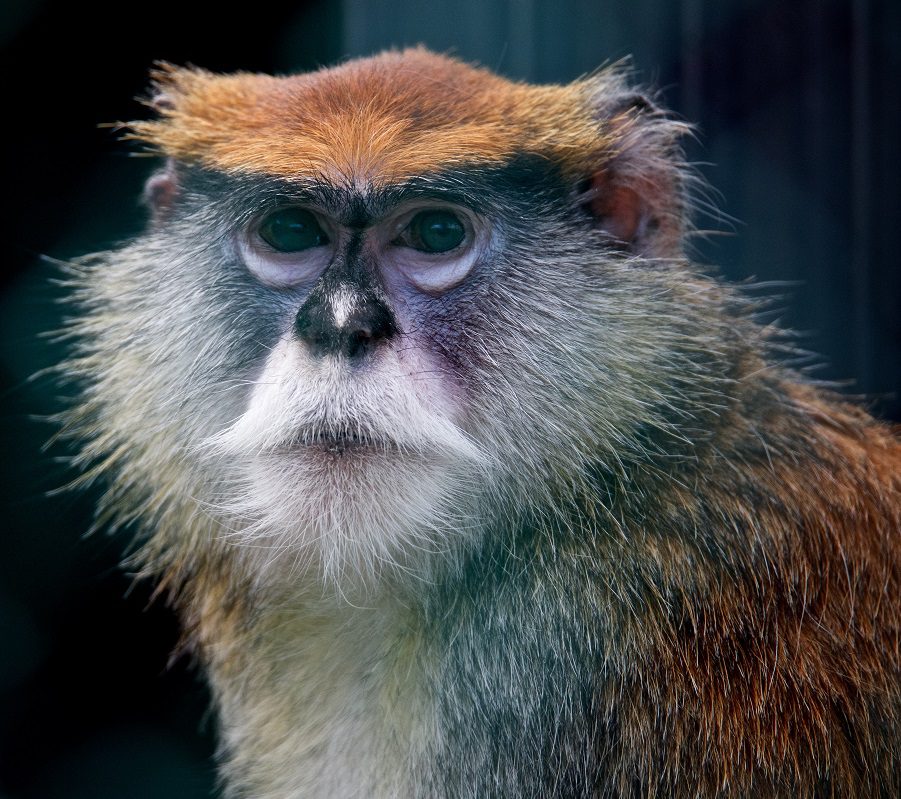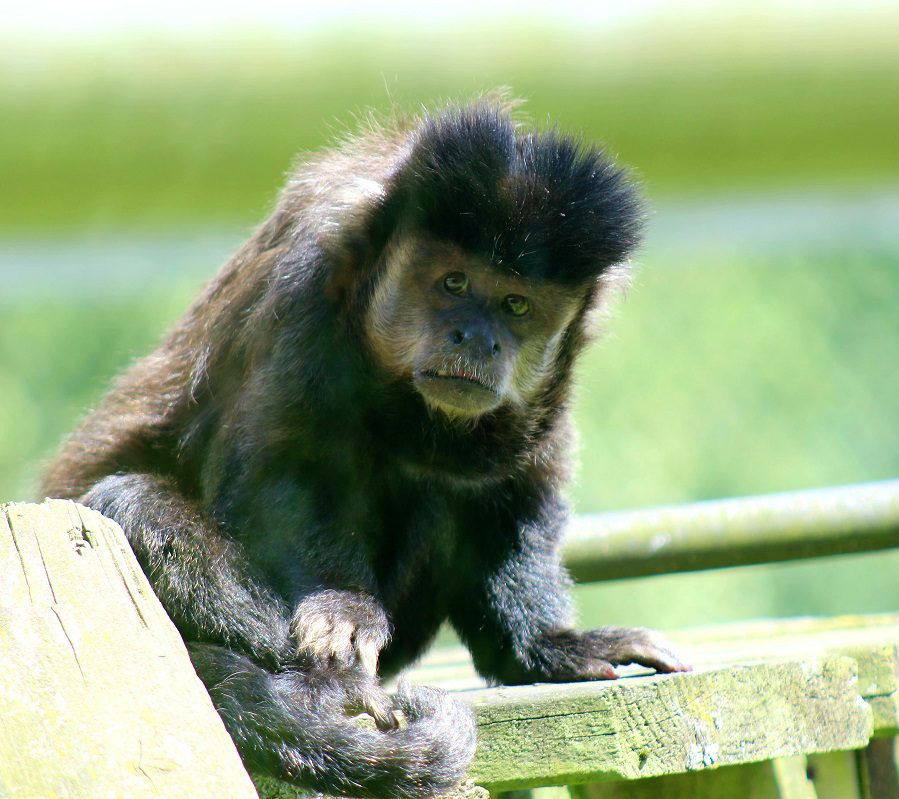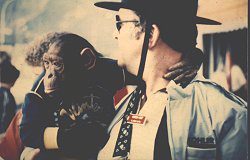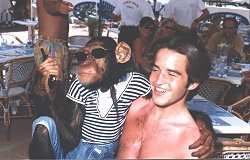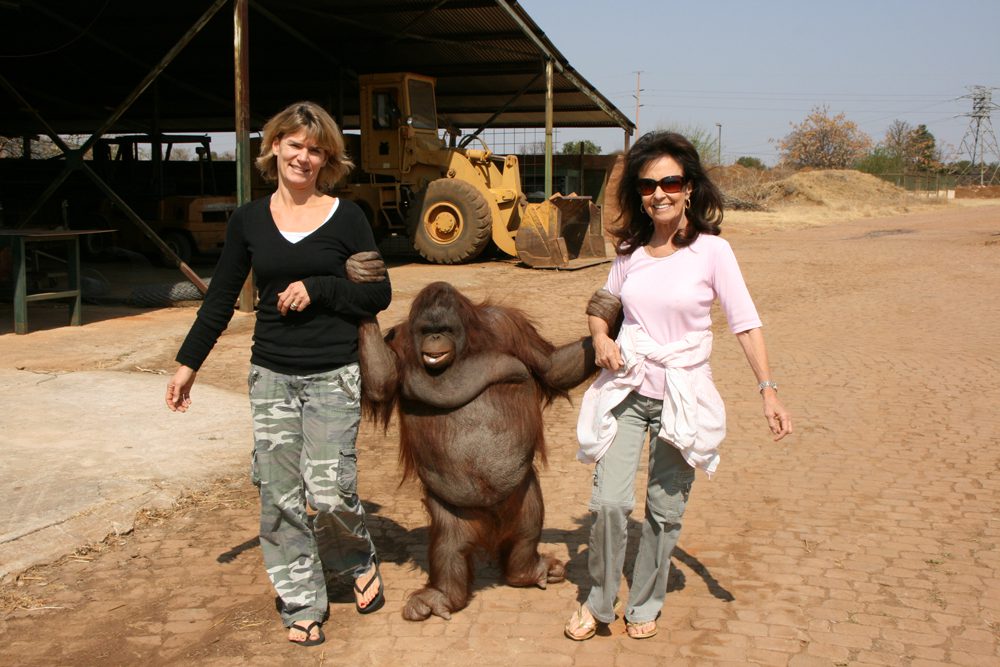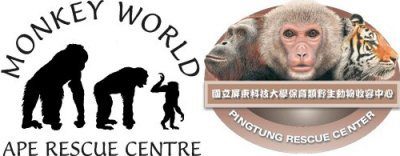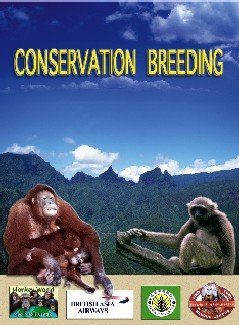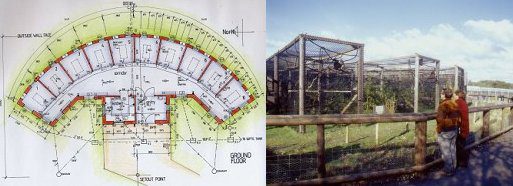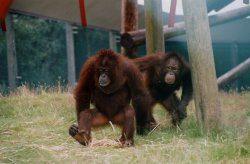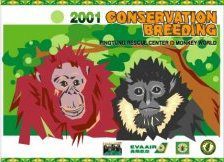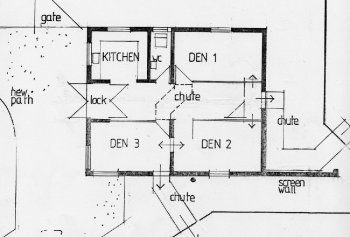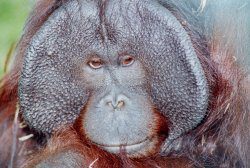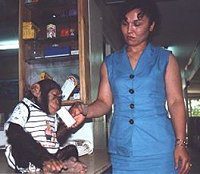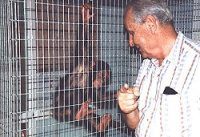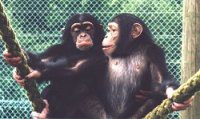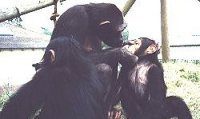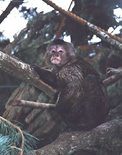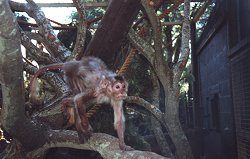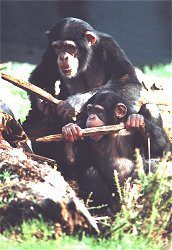July 2000 – Primate Re-homing
Arrangements were made for the first transfer of gibbons and orangutans from Pingtung Rescue Centre to Monkey World. On this occasion British Airways paid for the cargo costs of transporting the animals. This first shipment included:
- One adult female orang-utan (Pongo pygmaeus).
- Three male and one female Mueller’s Gibbons (Hylobates muelleri).
- One male agile gibbon (Hylobates agilis).
- One male lar gibbon (Hylobates lar).
- Two female golden-cheeked gibbons (Hylobates gabriellae).
The move went well and now all of the primates were integrated into groups with their own kind.
February 2001 – Smuggling Investigations
Jim and Alison Cronin and Dr Kurtis Pei from Pingtung Rescue Centre for Endangered Wild Animals travelled to Vietnam to see how common the trade in wild caught gibbons and other primates was. In the previous year the two centres joined forces to rescue and rehabilitate Asian apes and it was not long before they realised that illegal, wild caught primates were flooding out of Laos, Cambodia, and Vietnam. In particular they were interested in tracking golden-cheeked gibbons (Hylobates gabriellae) in order to find out if the smuggling routes were well organised or if the trade was simply an infrequent operation.
The team first travelled to Hanoi in the North where they visited Cuc Phuong Endangered Primate Rescue Centre (EPRC). This centre takes in gibbons, langurs, and loris and has done so for many years. The Director of EPRC explained that they had been receiving primates over the past year and that this was probably because the wild primates are declining in numbers and they are more difficult to hunt and trap in the wild. The EPRC team follow up on reports of endangered primates that they hear about and work with the Vietnamese Authorities to confiscate illegally held primates.
From Hanoi the team headed for Ho Chi Minh City where, posing as potential buyers, they hoped to find primates in the animal markets. On the first day of searching the traditional medicine stalls and meat markets they found ivory, tiger paws, bear bile and claws, stuffed wild cats and binturongs, and wild animal meat openly for sale. In the live animal markets were thousands of snakes and birds but you had to look a bit closer to see live wild cats, large birds of prey, martins, civets, and flying-squirrels. There were also hundreds of pygmy loris openly for sale, for US$10, in many shops and on street corners. With a bit of searching the Cronins and Dr Pei found a market with primates. Small macaques in tiny cages were for sale for US$30 and in the back of one of the stalls the team spotted a very young golden-cheeked gibbon that was for sale for US$250. The team were told that another gibbon could be found for them to buy in as short a time as one week. This showed that the smuggling of endangered primates is an active trade in Vietnam. At another market shop, the team found three gibbons for sale for US$250. Amazingly, another primate was for sale, a black-shanked douc langur (Pygathrix nigripes); an extremely rare and endangered species. This animal was for sale for US$300.
A full report was sent to EPRC and hopefully they were able to remove these endangered species from the markets with the assistance of the Vietnamese Authorities.
March 2001 – Keeper Exchange Programme
A keeper from Monkey World was sent to work at Pingtung for another 10 days. On this occasion the keepers “redecorated” and modified many cages and enclosures.
Veterinary Support
In preparation for the next shipment of primates from the Pingtung Rescue Centre to Monkey World, Dr. John Lewis was sent to work with the veterinarians in Pingtung for another 7 days. During this time the veterinarians continued health screening many of the animals at the centre and Dr. Lewis also advised on dental surgery techniques for large carnivores such as bears and tigers.
